30 Interesting Facts About the Moon – 2024 Update
Last Updated on
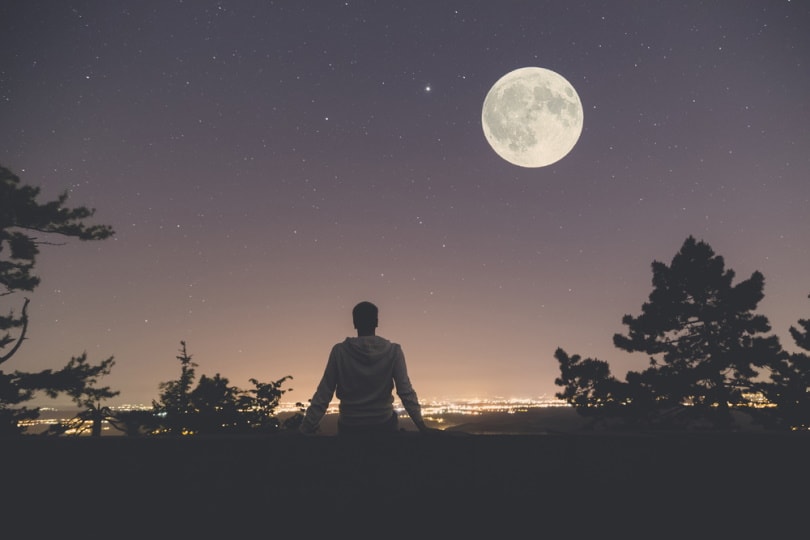
The United States and Apollo 11 made history on July 20, 1969, with the first humans to travel to the Moon. Humans have been fascinated with our only satellite since they were able to understand its significance and relevance to everyday life.
While Earth completes an orbit in 365 days, it only takes the Moon 27–29 days if you factor in the rotation of our planet. The satellite’s regular pattern provided an excellent way to keep track of the days. However, the Moon still has many stories to tell and surprising facts to share.

Top 30 Interesting Moon Facts
1. The United States Wasn’t the First Country to Reach the Moon
That honor belongs to the former Soviet Union. Its first unmanned spacecraft, the Luna 1, came close to landing but instead ended up becoming an Artificial Planet when it became lost in the Solar System’s orbit. Undeterred, the Soviets sent up Luna 2, which made a successful landing on the Moon’s surface on September 12, 1959.

2. The Moon Is 238,855 Miles From the Earth
It’s hard to believe that a distance of 238,855 miles is close to us, astronomically speaking. Yet, that distance made the satellite more accessible than any nearby satellite or planet. That’s why space exploration tackled it first. To put it into perspective, it took Apollo 11 about 76 hours to reach the Moon while traveling over 3,000 miles per hour.
3. The Moon Is Around 4.5 Billion Years Old
That figure applies to the entire Solar System from its formation with the Big Bang Theory. It may sound like a lot until you put it in context with the Universe. The latest accepted calculation is that it is 13.8 billion years old. Using a year as an analogy for the age of the Earth, the time that modern humans first evolved would be December 31, 11:38 p.m.

4. The Moon Got Its Characteristic Surface From Billions of Years of Space Object Bombardment
As you can imagine, a lot of debris was racing around the Universe when the Solar System first formed. The constant onslaught of rocks and meteoroids took a toll, giving the Moon its crater surface.
5. The Moon Has Had a Limited Number of Visitors
Just 24 humans have made the journey to the Moon. Of that number, only 12 have actually walked its surface. Of course, Neil Armstrong was the first one. Astronaut Gene Cernan was the last American on the Apollo 17 mission that left the Moon on December 14, 1972.

6. Scientists Have Confirmed the Presence of Water on the Moon
Whether humans can live on the Moon is another story. However, the Indian mission Chandrayaan-1 detected water on the surface in 2008. NASA’s Stratospheric Observatory for Infrared Astronomy (SOFIA) corroborated these findings in October 2020, saying that small concentrations had been found.
7. Significant Temperature Swings Exist on the Sunlit and Dark Sides of the Moon
We know that the Moon’s atmosphere differs from ours, which is part of the reason that it’s inhabitable. The other factor is temperature. Things get pretty toasty on the sunlit side, with temps soaring up to a blistering 260℉. It’s just as tough on the dark side, where temperatures plummet down to a frigid -280℉.

8. It Would Likely Take You More Than a Year to Walk Around the Moon
If the stars aligned and you could walk its surface, it would take over a year to circumnavigate the satellite. A human can manage to walk over 3 miles per hour, which is much faster than the astronauts were able to accomplish. Nevertheless, you’d like only to be able to hike for a few hours a day.
9. The Average Moon Day Is About the Length of an Earth Month
While we experience night and day in 24 hours, it’s a different story on the Moon. It rotates at its own pace, completing its days in 29.53 of ours.
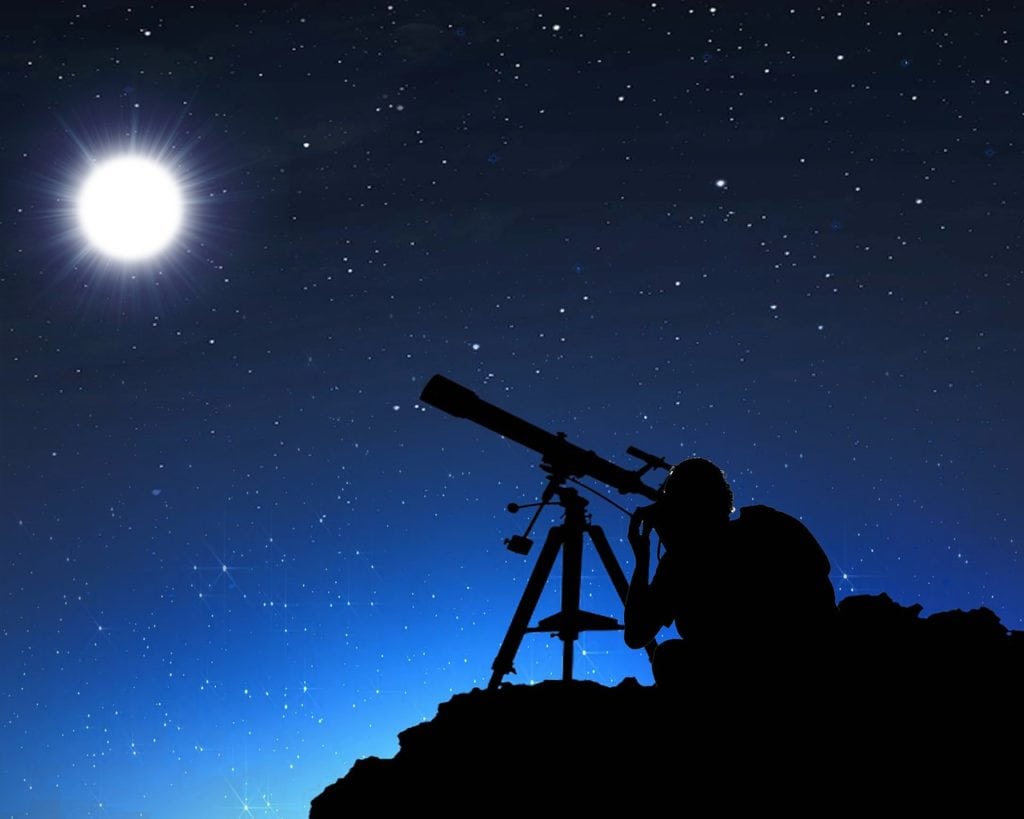
10. Some of the Precious Moon Rocks Collected by the Space Program Were Almost Stolen
Three interns joined NASA in 2002. Thad Roberts devised a plan to steal some of the rocks from a safe that contained items used by staff members for educational purposes. Roberts had lined up a prospective buyer. What he didn’t know was that the Belgian collector had contacted the FBI. Agents were on site at the restaurant where Roberts had set up the estimated $21 million exchange.
11. Carbon Dioxide Exists on the Moon
After analyzing temperature data, scientists now know that carbon dioxide traps exist on the Moon. Interestingly, the chemical doesn’t exist in vapor but in solid form. Researchers speculate that these blocks could provide a potential energy source for future missions.

12. Moon Rocks Chronicle the Satellite’s Geological History
Moon rocks retrieved by China’s Chang’e-5 mission provided evidence of a volcanic eruption that occurred about 2 billion years ago. These rocks and younger and older specimens have helped scientists map the Moon’s formation through time.
13. It’s Not the Moon’s Fault
The Moon is often the scapegoat for many things, from unusual behavior to weird, seemingly unexplainable incidents. A 2004 study even tried to correlate it with hospital admissions. A 2015 review debunked these findings.

14. Tides Are Essentially a Tug of War With the Moon
We know that low and high tides occur each day. You may not realize how the Moon’s gravitational force makes it happen. Whatever side the Earth is facing, the Moon experiences the greatest pull from the satellite and, hence, causes high tide. It also occurs on the opposite side because the ocean waters are swelling as they pull away from this force.
15. No, It’s Not an Alien Cabin on the Moon
China’s Yutu 2 rover spotted what scientists described as a hut in December 2021, fueling all kinds of speculation of an alien rest stop. It turns out it’s nothing but a rock that happens to be shaped like a rabbit. Its unusual form earned it the Chinese nickname Yutu.
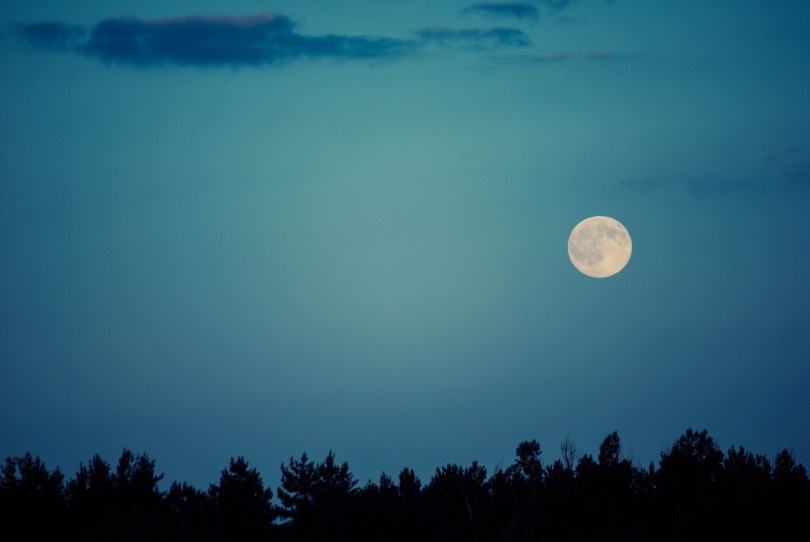
16. The Moon Can Affect Bird Migration Patterns
Scientists from Lund University in Sweden discovered a fascinating correlation between the lunar cycle and bird migration. They observed that European Nightjars took advantage of the bright nights during the full Moon to hunt twice as much 10 days before starting their seasonal flight down south. The birds followed this pattern consistently through their three-stage migration.
17. The Moon and the Solar System Are Protected From Exploitation
As the race to get a man to the Moon accelerated, the United Nations had the wise foresight to enact an international treaty to protect the Solar System from exploitation by any country trying to take ownership of any celestial body.
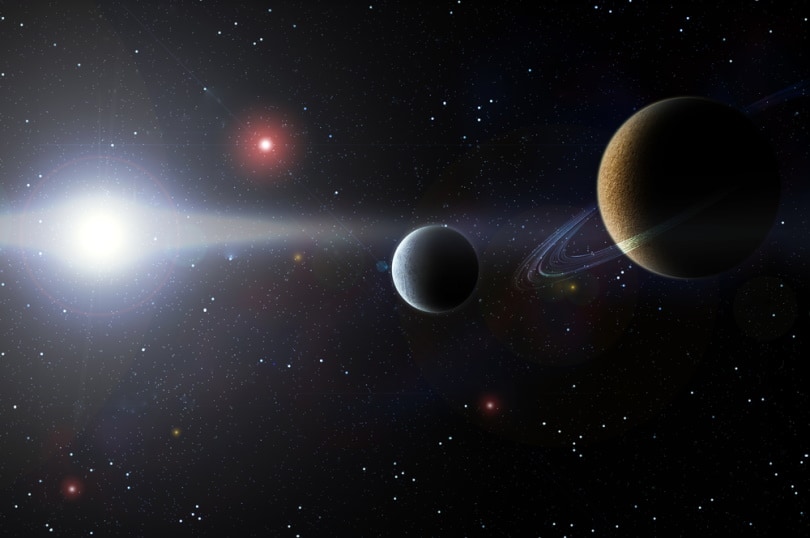
18. There’s A Lot of Rumbling Going on the Moon
The astronauts put seismometers on the Moon during their explorations. Data from them have revealed four types of quakes called moonquakes. Scientists hypothesize that some are shallow, whereas the freeze cycle, meteorites, and tides might be behind some of the others.
19. Naming Lunar Features Goes Back to the 17th Century
You’ll notice many familiar and often unusual names for lunar features. The quasi-official practice goes back to 1651 to Italian Jesuits Francesco Maria Grimaldi and Giovanni Battista Riccioli. They gave Latin names to the so-called seas with monikers, such as Clouds (Nubium) and Rain (Imbrium). Others followed until the International Astronomical Union (IAU) took the reins in 1919.

20. You Can Set Your Watch to Greenwich Mean Time (GMT) on the Moon
We have our time zones here on Earth. The Universe walks to its own drum with the so-called Universal Time (UT), or our GMT. If you want to know the time up there, just check what GMT is.
21. The United States Hasn’t Landed on the Dark Side of the Moon
For as much exploring as the United States has done, we have yet to send a crewed spacecraft to the dark side of the Moon. However, China has accomplished what no one else has done yet with its Chang’e-4 mission in January 2019. It required advanced technology to complete it successfully since that side is called by its name for a reason.

22. While the Moon May Seem Close to Earth, It’s Actually Drifting Away From Us
The position of the Moon and Earth varies depending on the time of the year. When it’s close, it almost feels like you can touch it. The reality is that it’s moving away at a rate of 3.8 cm a year.
23. The Earth Is Just Under Four Times Larger Than the Size of the Moon
The Earth’s surface area is over 13 times that of the Moon. Our planet’s radius is about 3.67 times that of the Moon.
24. Dark Is Really Dark on the Moon
We know that the Moon’s atmosphere is different from ours. Its gravity isn’t the same, either. The fact that it doesn’t have air also affects the appearance of shadows. Molecules alter how shadows look, making them not as dark here on Earth. They are much darker on the Moon because of the absence of air and its light-scattering effects.
25. The Moon Has at Least One Mineral That Doesn’t Exist on Earth
Geological and topographical forces affect the composition and appearance of rocks. Other forces caused the formation of different materials. European scientists discovered a new high-pressure mineral called Donwilhelmsite from a meteorite brought back to the Earth from earlier space missions.

26. The Dark Side of the Moon Will Always Remain Elusive
This part of the Moon gets its name for a reason. We’ll never see it unless you go to it. It’s because of the synchronous rotation of the planet and its satellite share. As the Earth rotates, so does the Moon, keeping pace with it.
27. Seas Cover About 15% of the Moon’s Surface
You can see them without a telescope—dark patches on the Moon’s surface. Scientists call these topographical features lunar maria. They have fanciful names, such as Sea of Cleverness and Sea of Cold. They cover about 15% of the satellite’s area.
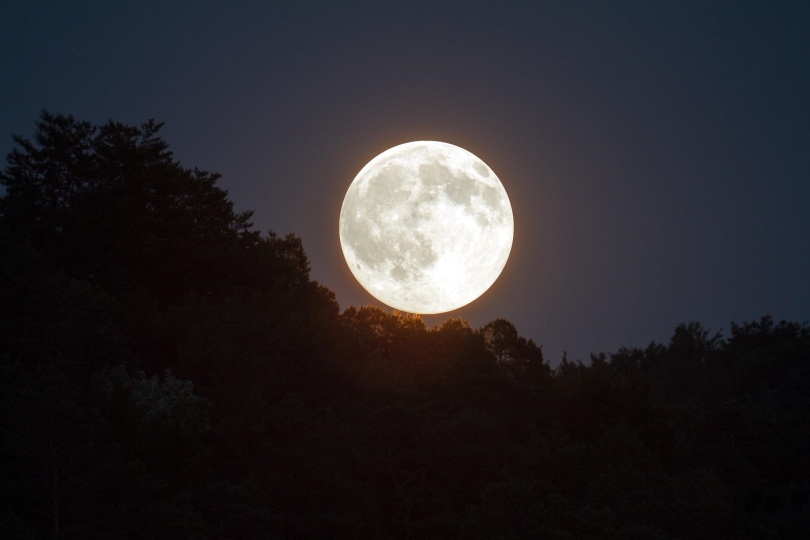
28. Our Atmosphere Turns the Moon Red During Total Eclipses
A total lunar eclipse is a dazzling sight, made even more spectacular because of its red color. Our atmosphere is responsible for this change. It filters out the blues and leaves the oranges and reds reflecting back at the planet.
29. Scientists Hope to Create a Genetic Reservoir on the Moon
The project is ambitious, to say the least. However, you can’t deny its value. Scientists want to create a lunar ark on the Moon, complete with DNA from all of the 6.7 million known species on the planet. Researchers refer to the undertaking as a global insurance policy against a catastrophic event, such as the asteroid that wiped out the dinosaurs.

30. There’s a Man on the Moon—Literally!
Eugene Shoemaker was a brilliant geologist, honored with just about every award that exists in geoscience. Shoemaker died tragically in a car accident in July 1997. However, his legacy lives on because his remains are literally on the Moon. The Lunar Prospector space probe jettisoned some of the scientist’s ashes to the satellite in July 1999.

Conclusion
As you’ve seen, science is learning more every day about the Moon. Advanced technologies have helped researchers look at the rocks and other collected materials in new ways. The more we know about our lone satellite, the more we discover about our planet and the Universe.
Featured Image Credit: zoff, Shutterstock
Table of Contents
- Top 30 Interesting Moon Facts
- 1. The United States Wasn’t the First Country to Reach the Moon
- 2. The Moon Is 238,855 Miles From the Earth
- 3. The Moon Is Around 4.5 Billion Years Old
- 4. The Moon Got Its Characteristic Surface From Billions of Years of Space Object Bombardment
- 5. The Moon Has Had a Limited Number of Visitors
- 6. Scientists Have Confirmed the Presence of Water on the Moon
- 7. Significant Temperature Swings Exist on the Sunlit and Dark Sides of the Moon
- 8. It Would Likely Take You More Than a Year to Walk Around the Moon
- 9. The Average Moon Day Is About the Length of an Earth Month
- 10. Some of the Precious Moon Rocks Collected by the Space Program Were Almost Stolen
- 11. Carbon Dioxide Exists on the Moon
- 12. Moon Rocks Chronicle the Satellite’s Geological History
- 13. It’s Not the Moon’s Fault
- 14. Tides Are Essentially a Tug of War With the Moon
- 15. No, It’s Not an Alien Cabin on the Moon
- 16. The Moon Can Affect Bird Migration Patterns
- 17. The Moon and the Solar System Are Protected From Exploitation
- 18. There’s A Lot of Rumbling Going on the Moon
- 19. Naming Lunar Features Goes Back to the 17th Century
- 20. You Can Set Your Watch to Greenwich Mean Time (GMT) on the Moon
- 21. The United States Hasn’t Landed on the Dark Side of the Moon
- 22. While the Moon May Seem Close to Earth, It’s Actually Drifting Away From Us
- 23. The Earth Is Just Under Four Times Larger Than the Size of the Moon
- 24. Dark Is Really Dark on the Moon
- 25. The Moon Has at Least One Mineral That Doesn’t Exist on Earth
- 26. The Dark Side of the Moon Will Always Remain Elusive
- 27. Seas Cover About 15% of the Moon’s Surface
- 28. Our Atmosphere Turns the Moon Red During Total Eclipses
- 29. Scientists Hope to Create a Genetic Reservoir on the Moon
- 30. There’s a Man on the Moon—Literally!
- Conclusion
About the Author Chris Dinesen Rogers
Chris has been writing since 2009 on a variety of topics. Her motto with all of her writing is “science-based writing nurtured by education and critical thinking.” Chris specializes in science topics and has a special love for health and environmental topics, and animals of all shapes and sizes.
Related Articles:
15 Crucial Facts About Ultraviolet Rays & the Sun
What Constellation Is Spica In? The Interesting Answer!
10 Interesting Leo Constellation Facts, Myths, and FAQs
15 Interesting Pegasus Constellation Facts, Myths, and FAQs
6 Interesting Sagittarius Constellation Facts, Myths, and FAQs in 2024!
What Are Constellations? Where Did They Come From?
8 Interesting Libra Constellation Facts, Myths, and FAQs
What Is Infrared Radiation? Science-Based Facts & FAQ
